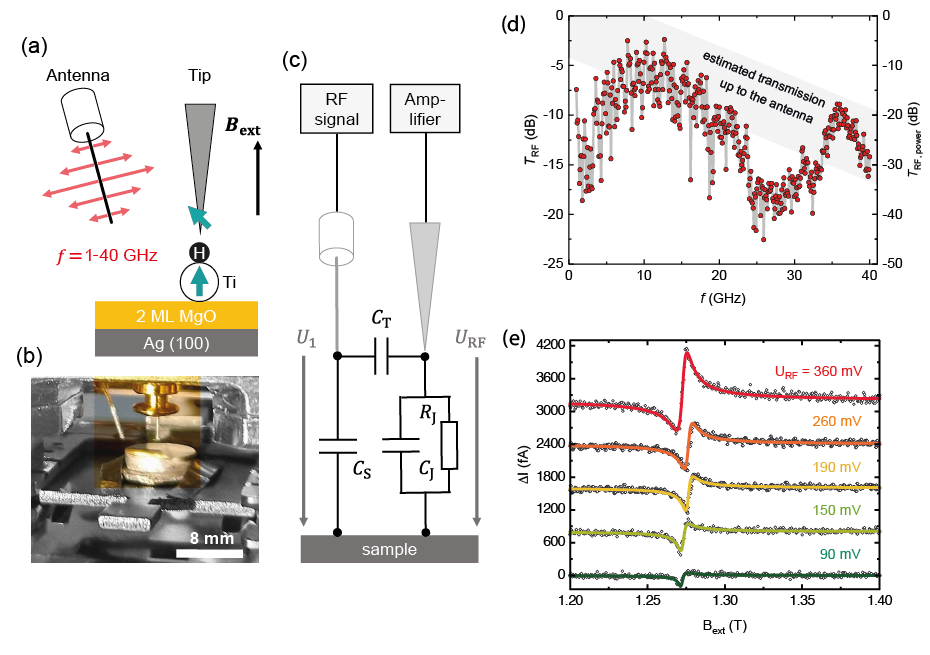Implementing EPR functionality in an STM

In our first work on EPR-STM, we have shown that a coupling efficiency of the order of unity can be achieved between the microwave excitations and the tunnel junction by using a radiofrequency antenna placed parallel to the STM tip [1], see Figure (a-d). We also demonstrated the possibility to perform EPR-STM routinely above 4 K using amplitude as well as frequency modulation of the radiofrequency excitation. As shown in Figure (e), the ability to use high rf voltages in the STM junction is key to the observation of strong EPR lines in the experiments and thus to work at temperatures beyond 4 K. The possibility to perform EPR-STM at relatively high temperature and high power opens this technique to a broad range of experiments, ranging from pulsed EPR spectroscopy to coherent spin manipulation of single atom ensembles. We further compare different EPR acquisition modes on single hydrogenated Ti atoms and evaluate the advantages of frequency and magnetic field sweeps as well as amplitude and frequency modulation in order to maximize the EPR signal.
Rerefence
[1] T.S. Seifert, S. Kovarik, C. Nistor, L. Persichetti, S. Stepanow, and P. Gambardella, Single-atom electron paramagnetic resonance in a scanning tunneling microscope driven by a radio-frequency antenna at 4 K, Physical Review Research 2, 013032 (2020). Download article (PDF, 1.8 MB)